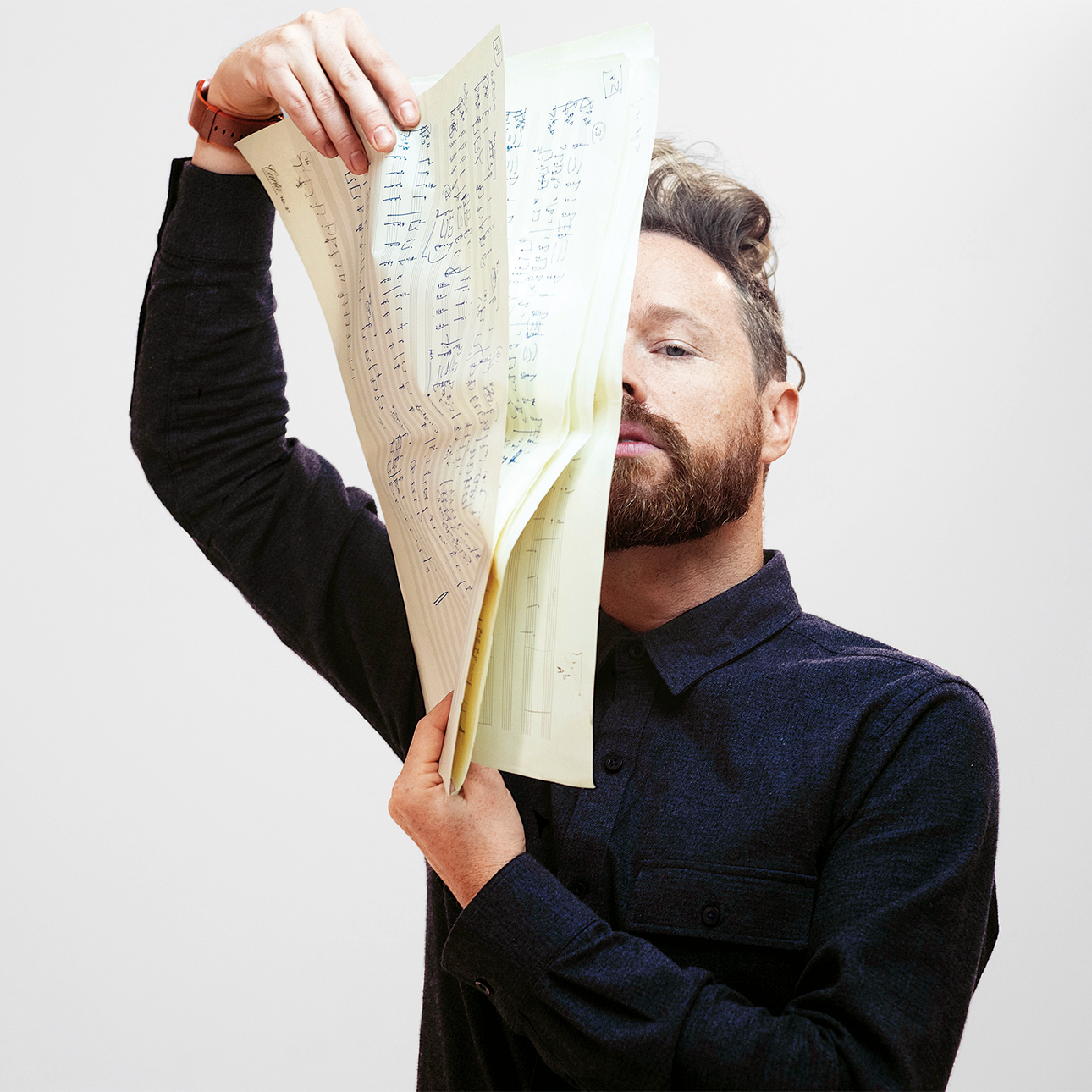When Charlie Williams ’01 performs his piano compositions onstage, audiences aren’t just watching his fingers hit the keys. Behind him, a large screen displays video projections — colorful shapes, scenery and even a massive sea monster — that dance along with every note he plays. These “musically reactive visuals,” as he calls them, are algorithmically generated, coded by Williams himself.
A U.K.-based new media artist who performs under the moniker Larkhall, Williams is not only a pianist and composer but also a self-taught coder who has found unique ways to combine his creative and technical talents.
Larkhall performs 'Time of Flight' in Bristol, U.K.
Williams began experimenting with music and technology as a student at the Bienen School of Music, combining his postclassical piano compositions, for example, with electronic sounds sampled from his everyday life, such as the shouts of rowdy students in the restaurant below his apartment. He earned a master of philosophy in music from the University of Cambridge and then briefly worked as a software developer for tech startups before devoting himself full time to his music projects.
After saving up for years, Williams bought a grand piano with built-in sensors that could record each note he played, translating his music into data points. Using TouchDesigner, a visual programming platform, he started playing with visualizations of that data. That’s when he thought about adding a visual element to his piano performances.
“Once I had developed a visual vocabulary for my music, I started thinking about how I could make it work live,” he says. He coded an algorithm that listens to each note he plays and converts the music into dynamic, digital art. “The visuals are all created live, so I can play a bit faster or slower — or even make a mistake — and the visuals will respond in real time,” he says.
Williams’ album The Sea Was Never Blue reached No. 2 on the iTunes classical chart in the U.K. in 2019. This fall, he is touring the U.K. to promote his third album, Say You’re With Me, which he released in June.
Paulina Freedman is class notes editor for Northwestern Magazine.




Reader Responses
No one has commented on this page yet.
Submit a Response